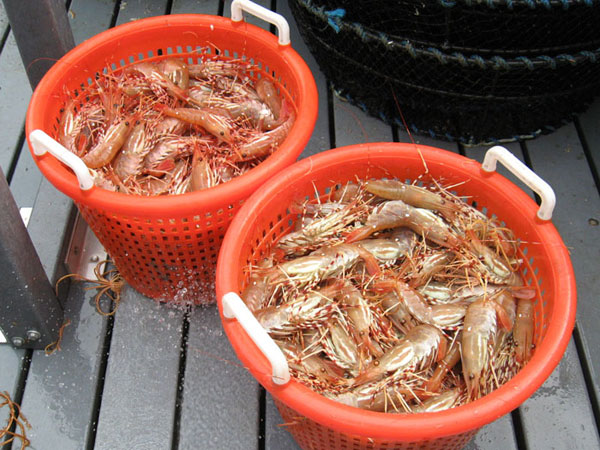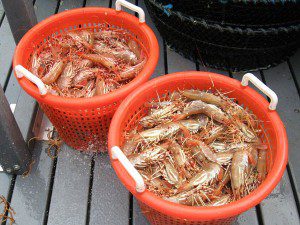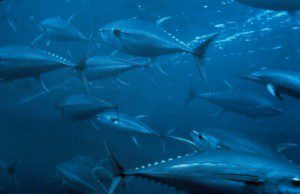
29 Jun EARTH MATTERS: SO WHAT FISH CAN I EAT?
 People who know I work for Ocean Conservancy, a marine-focused environmental NGO, often ask me, “So what fish can I eat?” Unfortunately, there is no single, simple, easy answer to this question, so my facile (and facetious) “None!” is usually followed by a more detailed explanation of what are some of the best seafood choices and what are some to be avoided.
People who know I work for Ocean Conservancy, a marine-focused environmental NGO, often ask me, “So what fish can I eat?” Unfortunately, there is no single, simple, easy answer to this question, so my facile (and facetious) “None!” is usually followed by a more detailed explanation of what are some of the best seafood choices and what are some to be avoided.
When we talk about seafood consumption—as when we talk about most food—we are talking about several different issues combined: human health, environmental health, business and livelihoods. I will focus less here on the human health questions. For those, Natural Resources Defense Council (NRDC) has a good guide relating to mercury in fish, available online at http://www.nrdc.org/health/effects/mercury/walletcard.pdf. The card also notes environmental issues with an asterisk for fish that may be overfished or caught using environmentally harmful methods, noting that farmed salmon—problematic for other reasons besides—may contain PCBs (polychlorinated biphenyls, chemicals that bioaccumulate in bodies and that can have serious, long term health effects).
The NRDC card is not the only “fish card” out there, though, and several of the others treat multiple issues as well. Almost all of these cards use a red, yellow, green classification system, with red being no go, yellow caution, and green a good choice. Monterey Bay Aquarium created its first pocket guide in 1999, and continues to update its recommendations. You can find regionally-relevant pocket guides for the US—and even a sushi guide—at http://www.montereybayaquarium.org/cr/cr_seafoodwatch/download.aspx. The Monterey Bay Aquarium now even has smartphone apps for its seafood guides. For both US and international guides, as well as a good discussion of the value of these guides, check out Slow Food’s Slow Fish resource site on seafood guides at http://www.slowfood.com/slowfish/pagine/eng/pagina.lasso?-id_pg=94. One of the most interesting resources on the Slow Fish site is a “consensus guide” developed by researchers at the University of Rhode Island who looked at the main seafood guides and categorized seafood into areas of consensus for green (good), yellow (caution), and red (don’t eat); areas of lack of consensus (where different guides rate the same fish differently); and areas where too little is known about the fishery to give an informed recommendation.
There are also a number of fish certification systems that seek to inform consumers about which fish come from well-managed fisheries or more sustainable aquaculture systems. The best-known of the fisheries certification systems is the Marine Stewardship Council (MSC), that allows fisheries to apply for certification as sustainable and then certifies them if they meet certain criteria. More on the selection criteria and the MSC-certified fisheries is available at www.msc.org, and, like the Monterey Bay Aquarium, MSC has its own app. MSC certification is far from non-controversial, however, with many environmental organizations questioning the criteria as too lax.
Aquaculture is an issue that merits its own article. I have already talked about the issue of transgenic salmon, and in that article, touched upon some of the problems of farmed salmon more broadly, but aquaculture and mariculture go far beyond just farmed salmon. Here I will just note that the consensus guide puts farmed salmon and imported and tropical farmed shrimp on the red list, while US-farmed catfish and crawfish, as well as US farmed caviar, clams, cockles, mussels, oysters, Bay scallops, and U.S. farmed tilapia are all on the green list.
Finally, there is the question of what is a good socially just choice. While a number of scientists suggest we are “fishing down the food chain” and that we are nearly out of time for the world’s fisheries (see, for example, Dan Pauly’s excellent editorial on the problems with eating fish (see http://www.huffingtonpost.com/dr-daniel-pauly/fish-as-food-a-love-affai_b_354399.html?ref=fb&src=sp&comm_ref=false), other scientists warn that by penalizing fisheries that are rebuilding by avoiding them altogether even though managers are allowing limited fishing, consumers are harming livelihoods without helping fisheries (see, for example, Ray Hilborn’s work at his home page: http://fish.washington.edu/people/rayh/). The problems here come down to the large knowledge gaps and uncertainty in determining what is, in fact, good management and what are acceptable levels of fishing in stocks that are rebuilding.
What does this all translate to? Basically, we need good, ecosystem-based fisheries management based on solid data, including data from fishermen themselves; a stop to IUU (illegal, unregulated, and unreported) fishing; and effective traceability and testing of fish and seafood products. In the meantime, we need purveyors, purchasers, and chefs to be careful about what products they sell and use. Finally, as consumers, we should choose our seafood carefully, both for our own health and for the health of our environment.
Personally, I eat very little seafood, sticking mostly with oysters, clams, sardines, mackerel, and, when I can get it, farmed caviar. I won’t turn down lobster (sometimes classified as yellow) or stone crabs, either. Finally, here’s what I usually give as my recommendations (focused on more widely available seafood, and by no means complete):
Do not eat:
Farmed Atlantic salmon
Chilean sea bass (Patagonian toothfish)
Bluefin tuna (and be cautious with all tuna)
Any shrimp except Oregon pink shrimp (green), Gulf of Mexico shrimp (yellow), U.S. farmed (yellow)
Eel
Octopus
Note: sorry, sushi lovers, but instead of going for the standbys of salmon, tuna, eel, and shrimp, try vegetable rolls, mackerel, spot prawn, and uni.
Eat with near total lack of compunction:
U.S. farmed tilapia
U.S. farmed catfish
U.S. farmed carp
Mollusks: oysters, clams, scallops, cockles
Small silver fish: sardines, mackerel, herring (anchovies except from from the Bay of Biscay)
Prawns from BC or Alaska
Dungeness and Stone crabs
US farmed caviar
Wild Alaskan salmon (And if your friends catch a salmon on the West Coast – legally! – and offer you some, by all means say yes.)



Sorry, the comment form is closed at this time.